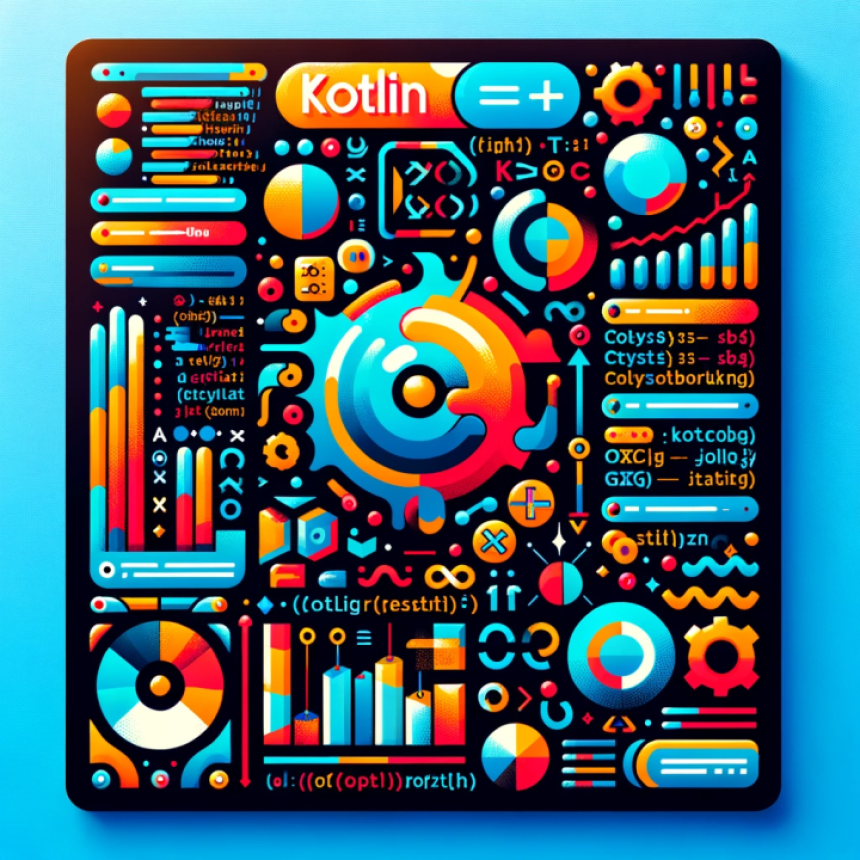
Introduction to Kotlin Functional Programming (3/3)
Continue with the third and final part of our talk about Functional programming in Kotlin
If you haven’t already, It is recommended to read the previous article first:
- Introduction to Kotlin Functional Programming (part 1)
- Introduction to Kotlin Functional Programming (part 2)
In this third and final article we will cover the following topics:
- FP Challenges and Best Practices.
- Conclusion: The Future of Kotlin and FP.
--------------
[1] FP Challenges and Best Practices
[A] Learning Curve and Challenges
Let's acknowledge the learning curve and challenges that developers may encounter when transitioning from Object-Oriented Programming (OOP) to Functional Programming (FP), especially in the context of languages like Kotlin.
1. Paradigm Shift:
- Learning Curve: The transition from OOP to FP involves a fundamental shift in thinking and problem-solving. Developers accustomed to OOP may initially find it challenging to embrace the functional paradigm's different approach to code organization and data manipulation.
2. Immutable Data:
- Challenge: FP promotes immutability, which means that data cannot be modified once it's created. This can be a significant departure from the mutable state common in OOP. Developers must adapt to working with immutable data structures, which can require a different mindset and coding style.
3. Higher-Order Functions:
- Challenge: Understanding and effectively using higher-order functions, which take functions as arguments or return functions, can be challenging for those unfamiliar with FP. Developers need to grasp concepts like lambdas and function composition.
4. Pure Functions:
- Challenge: Writing pure functions, which have no side effects and rely solely on their inputs, may require a change in coding habits. Avoiding shared mutable states and ensuring functions are idempotent can be challenging for developers accustomed to OOP practices.
5. Debugging and Troubleshooting:
- Challenge: Debugging FP code can be different from debugging imperative code. Understanding the flow of data transformations and pinpointing issues in a functional pipeline may require new debugging techniques.
6. Functional Libraries:
- Challenge: Learning and effectively utilizing functional libraries and frameworks may add complexity for developers accustomed to OOP. While libraries like Arrow or kotlinx.coroutines provide powerful FP tools, they can have a learning curve.
7. Integrating with Existing Codebases:
- Challenge: Integrating FP concepts into existing OOP codebases can be challenging. Developers may need to find a balance between the two paradigms, which may result in a mixed codebase.
Best Practices to Overcome Challenges:
- Gradual Transition: Encourage a gradual transition from OOP to FP. Start by identifying specific components or modules where FP can be applied effectively and progressively expand from there.
- Education and Training: Provide training and resources to help developers learn FP concepts, including workshops, tutorials, and access to online learning materials.
- Code Reviews and Pair Programming: Encourage code reviews and pair programming sessions to share knowledge and best practices among team members.
- Practice and Experimentation: Encourage developers to practice and experiment with FP concepts in personal projects or isolated code segments to gain hands-on experience.
- Mentoring: Assign mentors or experienced developers to guide those who are new to FP, offering support and answering questions.
- Functional Patterns: Promote the use of functional design patterns, which can simplify complex problems and make FP more approachable.
- Tooling and IDE Support: Ensure that developers have access to IDEs and tools that provide support for FP, such as code completion for lambda expressions and functional constructs.
- Real-World Examples: Showcase real-world examples of how FP can lead to cleaner, more maintainable code and solve specific challenges in the project.
Acknowledging the learning curve and challenges and providing a supportive learning environment can facilitate a smoother transition from OOP to FP, allowing developers to harness the benefits of both paradigms effectively.
[B] Best Practices
Effectively using Kotlin's functional features while balancing functional and object-oriented approaches is key to writing clean and maintainable code. Here are some best practices to consider.
1. Start with Small Steps:
- Best Practice: Begin by incorporating functional features in smaller, well-defined parts of your codebase. This gradual adoption allows developers to gain confidence and experience in functional programming without disrupting the entire project.
2. Embrace Immutability:
- Best Practice: Prioritize immutability when designing data structures and objects. Use the val keyword for read-only properties and immutable collections to prevent accidental mutation of data.
3. Prefer Pure Functions:
- Best Practice: Whenever possible, write pure functions that have no side effects and depend only on their input parameters. Pure functions are easier to reason about and test.
4. Leverage Higher-Order Functions:
- Best Practice: Embrace higher-order functions like map, filter, and reduce to simplify data transformations and operations on collections. These functions promote a more declarative and functional style.
5. Use Data Classes:
- Best Practice: Kotlin's data classes are ideal for modeling simple, immutable data structures. They generate useful methods like equals, hashCode, and toString, reducing boilerplate code.
6. Employ Extension Functions:
- Best Practice: Use extension functions to add functionality to existing classes or provide utility functions. This enhances code readability and promotes functional-style operations.
7. Null Safety:
- Best Practice: Embrace Kotlin's null safety features by using nullable and non-nullable types. Handle null values explicitly with constructs like safe calls (?.) and the Elvis operator (?:) to avoid null pointer exceptions.
8. Understand Monads and Optionals:
- Best Practice: Familiarize yourself with functional programming concepts like monads and optionals, which are used for handling values that may or may not be present. Libraries like Arrow provide abstractions for these concepts.
9. Functional Testing:
- Best Practice: Develop unit tests that focus on the functional aspects of your code. Test pure functions with various input scenarios to ensure they produce expected results.
10. Document Intent Clearly:
- Best Practice: Provide clear documentation and comments for your code, especially when using functional constructs. Explain the purpose and intent of your functions and transformations.
11. Code Reviews and Knowledge Sharing:
- Best Practice: Conduct code reviews where team members can discuss and provide feedback on the functional aspects of the code. Encourage knowledge sharing to build a collective understanding of functional techniques.
12. Balance with OOP:
- Best Practice: Recognize that functional programming is not an all-or-nothing approach. Determine which parts of your code benefit most from functional features and leverage them while still embracing OOP principles where they are more appropriate.
13. Refactoring Opportunities:
- Best Practice: Regularly evaluate existing code for refactoring opportunities. Look for areas where functional programming can simplify and improve code readability.
14. Seek Expertise:
- Best Practice: Invest in training and learning opportunities for your development team. Consider bringing in experts or consultants to provide guidance on functional programming best practices.
Balancing functional and object-oriented approaches in Kotlin requires a thoughtful and pragmatic approach. By following these best practices, your team can leverage Kotlin's functional features effectively while maintaining code quality and readability.
--------------
[2] Conclusion: The Future of Kotlin and FP
Let's discuss how Kotlin's evolving ecosystem is likely to embrace more functional aspects in the future.
[A] Kotlin's Journey into Functional Programming:
Kotlin, originally developed by JetBrains, was designed to be a pragmatic and versatile language that could seamlessly integrate with existing Java codebases. While it started as a primarily Object-Oriented Programming (OOP) language, it quickly gained popularity in the functional programming community due to its expressive syntax and functional features.
1. Kotlin Standard Library:
Kotlin's standard library has been evolving to incorporate more functional programming constructs. It already includes functions like map, filter, reduce, and flatMap, which are commonly used in functional programming paradigms. As Kotlin matures, we can expect the standard library to continue to expand its functional capabilities.
2. Third-Party Functional Libraries:
Kotlin has a thriving ecosystem of third-party libraries that promote functional programming. Libraries like Arrow and Kotlinx.coroutines provide advanced functional constructs and asynchronous programming support, respectively. These libraries enable developers to embrace functional programming principles more deeply.
3. Kotlin Flow:
Kotlin Flow, introduced as part of Kotlin's coroutines library, has brought reactive and functional programming closer together. It provides a declarative way to handle asynchronous data streams, making it easier to work with reactive and event-driven paradigms while staying true to Kotlin's syntax and philosophy.
4. Jetpack Compose:
Jetpack Compose, Google's modern UI toolkit for Android development, is written in Kotlin and heavily embraces functional programming concepts. Compose encourages a declarative and composable approach to building user interfaces, aligning with functional principles.
5. Language Features:
Kotlin is an evolving language, and future updates may introduce more language features that align with functional programming. Kotlin's designers are known for being responsive to community feedback and open to incorporating ideas from the functional programming community.
6. Community Adoption:
The Kotlin community has been increasingly adopting functional programming practices. More developers are recognizing the benefits of immutability, pure functions, and declarative coding style. As the community evolves, it will drive further exploration and adoption of functional programming in Kotlin.
7. Industry Trends:
Functional programming is gaining traction in the software industry due to its benefits in terms of code correctness, parallelism, and maintainability. As the industry as a whole moves toward functional paradigms, Kotlin is likely to follow suit.
In conclusion, Kotlin's evolving ecosystem is poised to embrace more functional aspects in the future. With a growing set of functional features, libraries, and a community that values functional programming, Kotlin continues to provide developers with the tools and flexibility to write clean, expressive, and reliable code, whether they are following OOP or FP principles. The future of Kotlin looks promising for both paradigms, making it a versatile language that can adapt to the evolving needs of the software development world.
[B] The Rise of Functional Programming in Kotlin:
Over the years, Kotlin has evolved from being primarily an Object-Oriented Programming (OOP) language into a versatile language that fully embraces Functional Programming (FP) principles. This shift has been driven by the recognition of FP's benefits in terms of code clarity, predictability, and conciseness.
Impact on Software Development:
- Cleaner and More Maintainable Code: The adoption of FP in Kotlin has led to cleaner, more declarative, and highly maintainable code. Functional constructs like map, filter, and reduce have simplified data transformations and made code more self-explanatory.
- Reduced Null Pointer Exceptions: Kotlin's null safety features have significantly reduced the occurrence of null pointer exceptions, a common source of crashes in software. By making nullability explicit, FP promotes safer and more robust code.
- Concurrent and Asynchronous Programming: Kotlin's embrace of coroutines and Flow has made concurrent and asynchronous programming more accessible. This is particularly important in modern software development, where responsiveness and scalability are key.
- Enhanced Code Quality: The adoption of pure functions and immutability has enhanced code quality by reducing side effects and making it easier to reason about code behavior. This, in turn, leads to fewer bugs and better software reliability.
- Versatile Paradigm: Kotlin's support for both OOP and FP makes it a versatile language that can adapt to various project requirements. Developers can choose the most suitable paradigm for different parts of their codebase.
- Evolving Ecosystem: The Kotlin ecosystem is continuously evolving, with a growing set of libraries and frameworks that promote FP. This evolution is making it increasingly convenient for developers to leverage functional principles.
- Community and Knowledge Sharing: The Kotlin community's commitment to knowledge sharing and best practices fosters a supportive environment for developers to learn and adopt FP. Code reviews, tutorials, and discussions play a crucial role in advancing skills.
[C] The Future of Software Development:
As Kotlin's FP capabilities continue to expand, it is likely to play a pivotal role in shaping the future of software development. The adoption of FP in Kotlin is not just a trend but a fundamental shift in how developers approach software design and architecture. It empowers developers to write code that is more robust, expressive, and adaptable to changing requirements.
In conclusion, the adoption of Functional Programming in Kotlin represents a significant step forward in software development. It brings about improvements in code quality, safety, and concurrency handling. As more developers embrace FP principles within the Kotlin ecosystem, we can expect to see a positive impact on the software industry, leading to more reliable, maintainable, and efficient software systems. The synergy between Kotlin and FP is poised to shape the future of software development for the better.


![Design Patterns - [1] Creational](https://abuzaid.me/uploads/1675322863.jpeg)


